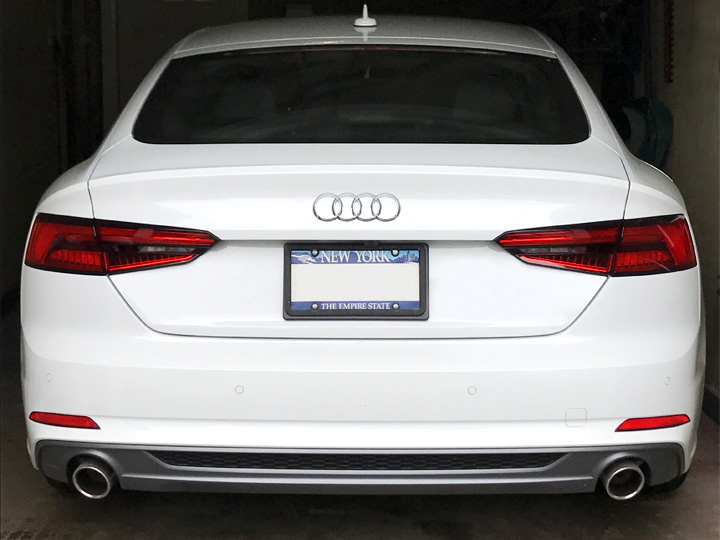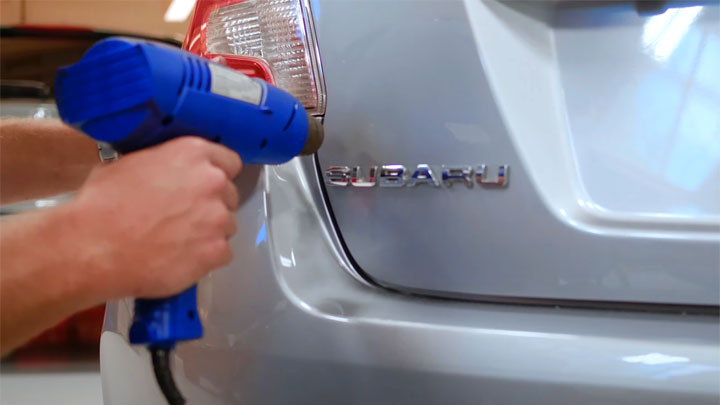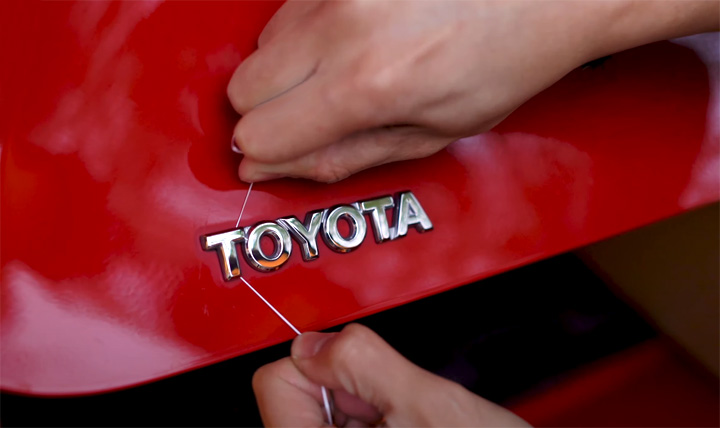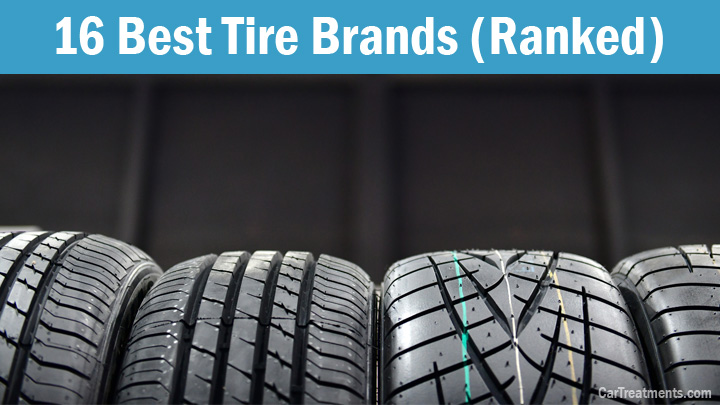Last Updated on November 16, 2021
Man’s love for vehicle customization is nearly as old as the automobile itself. Motorists have always strived to make their vehicles look original, in a way that is naturally appealing to the eye. This has traditionally been accomplished in a number of ways. From mild to wild, vehicles are commonly modified in almost every manner possible.
The practice of vehicle customization also follows trends. Particular modifications will gain popularity and spread like wildfire. In short order, these modifications will serve as the “trend of the day” and can be seen on display from one coast to the other.
In recent years, motorists have sought to bestow their vehicles with a cleaner look, via a process known simply as “debadging”. This practice is gaining significant popularity, due to its simplicity, and the aesthetic value that it provides. Car owners can also choose the extent to which they wish to debadge their vehicle, thereby achieving a 100% custom look.
Read on to learn more about the practice of debadging, as well as how to debadge your own vehicle.
Related: How to Remove Bumper Stickers
What is “Debadging”?

Debadging is the practice of removing one or more of a vehicle’s emblems.
These emblems are initially applied to a vehicle’s exterior during the production process, or upon arrival at the dealership, and are held in place with powerful adhesive. Debadging involves eliminating this adhesive’s bond so that an emblem can be removed as a whole.
In a sense, several “levels” of debadging exist. Some consumers choose to remove dealer emblems or badging from their vehicle, in a bid to eliminate the presence of advertising.
In other instances, trim package and model-related emblems might be removed. Going one step further, many choose to remove all emblems from their vehicle, including that which denotes a vehicle’s manufacturer.
Why Debadge a Car?

Individuals choose to debadge their vehicles for a number of reasons. Perhaps the most prominent of which is to achieve a more sleek, streamlined look. In these instances, removing excess badge-work cuts down on clutter, and creates a clean appearance, which many find visually appealing. Debadging of this type can be widely observed on custom vehicles.
Some motorists also claim that debadging makes a vehicle easier to clean and wax. Raised markings often prove too aggravating to deal with when buffing a car’s exterior, as such emblems readily trap wax, leaving behind a chalky residue of sorts.
Finally, there have been instances where debadging was conducted in an attempt to eliminate what was perceived as unauthorized advertising. The removal of such emblems de-commercializes a vehicle, greatly reducing the presence of easily observed examples of branding.
How to Remove a Car Emblem (Step-by-Step)

There is a substantial difference between debadging a vehicle by any means necessary, and debadging a vehicle the RIGHT way. When done correctly, debadging leaves a vehicle looking sleek and refined. However, when done haphazardly, debadging can actually damage a vehicle’s clear coat.
The following steps will assist you in properly debadging your vehicle.
#1 – Gather Supplies
To properly complete the debadging process, you will need a heat gun/hair dryer, fishing line, and pliable plastic scraper. It is also helpful to have a microfiber cloth, and a bottle of Goof-Off Automotive at your disposal.
#2 – Heat the Emblem
You will begin by heating your vehicle’s emblem with a heat gun or hair dryer. Doing so softens the bond of the adhesive that backs this emblem, making it much easier to remove.
#3 – Lift Emblem With Line
You will now work the emblem from its point of mount using a length of fishing line. At times, it can be helpful to use a sawing motion when attempting to remove the emblem, as this cuts through any remaining adhesive backing.
Alternatively, dental floss can be used for the same purpose although it has a tendency to tear making the job frustrating at times.
#4 – Heat and Remove Adhesive
Any remaining adhesive can now be heated again, which will in turn make this adhesive more pliable. Then, use your fingernail or pliable plastic scraper to gently lift any remaining adhesive from your vehicle’s exterior.
Note: Professionals at this stage will use an eraser wheel to remove the leftover residue. This works great but for most, it’s hard to justify the cost for one-time use.
#5 – Wipe Away Remaining Residue
Finally, wipe away any remaining residue with the use of a microfiber cloth and Goof-Off Automotive, or a similar adhesive remover. When finished, you should be left with a clean, bare surface, where your vehicle’s emblem once resided.
#6 – Final Polish
While the end result at this point may look completely fine, you likely have some micro scratches or light swirl marks (some paint colors show these more than others).
Use a tiny amount of a low cut/aggresive polish (Meguiar’s Mirror Glaze is great for this) with a clean microfiber cloth and you should easily be able to remove any imperfections as a result of the debadging process.
See Also: How to Remove Bird Poop Without Scratching Paint
Is Debadging a Vehicle Illegal?
Contrary to certain rumors, debadging a vehicle is not illegal. In fact, the removal of any badge or emblem from a vehicle’s exterior carries no bearing upon a vehicle’s roadworthiness or legality.
Though one might remove signs of a vehicle’s branding, its identity still remains, with proof of such being readily accessible.
A vehicle’s VIN (Vehicle Identification Number) serves as the true marker of a vehicle’s identity. This number is displayed in numerous locations throughout a vehicle, and describes an automobile’s year, make, and model.
The removal of a vehicle’s VIN is indeed illegal, though this is in no way related to the practice of debadging.
Read Also: How to Find a Car Your Previously Owned (Using the VIN)
Will It Affect Resale Value?

The jury is still out regarding whether or not the practice of debadging truly reduces a vehicle’s resale value. However, the general consensus is that debadging reduces a vehicle’s value only slightly, if at all.
The reason for this is that badging can be easily reapplied if so desired. Therefore, a modification of this type is far from irreversible in nature.
Additionally, most prospective car buyers care little about a vehicle’s badging. This badging, or a lack thereof, is of no value when determining how a used vehicle runs, or if all body panels are in a suitable condition.
Because of this, one is unlikely to be swayed one way or another in their buying decision, due to the issue of debadging.
Can a Dealer Debadge a New Car?
In certain cases, a dealer will debadge a new vehicle when purchased, upon a customer’s request. However, this decision is left solely up to the dealership in question, though most will be happy to oblige.
The bulk of full service dealerships have an auto detailing team on staff, which is often capable of removing a vehicle’s badging as desired.
Additionally, some dealerships might charge a minimal labor fee when debadging a vehicle. This scenario will be far more likely in instances where a new car is driven off of the lot, before returning to request debadging.
It is far easier to request this service as a bargaining chip during purchase negotiations. Doing so ensures that the cost of any debadging is factored into a vehicle’s purchase price.
Some car manufacturers even allow you to omit certain badges or emblems as part of the vehicle build process. That alone shows there is at least some demand from car buyers.
Can You Debadge a Leased Car?
The answer to whether or not you can debadge a leased car is a resounding, “Yes, and No.” While you “can” technically debadge a leased vehicle, only to rebadge it before turn in, most dealerships prefer that such practice do not take place.
One is also risking potential issues by returning their debadged lease car to the dealership for service, as such modifications might be spotted.
To be safe, it is important to review your lease contract before debadging a vehicle. If still unclear, contact the dealership through which your lease agreement is signed.
If this dealership states that debadging is permissible, get such a statement in writing to prevent problems in the future.




